
- 1. Why Pest Control is Important in Basements and Attics
- 2. How to Use Traps in Basements
- 3. How to Use Traps in Attics
- 4. Key Differences Between Basement and Attic Trapping
- 5. Common Pests Found in Basements and Attics
- 6. Best Pest Control Supplies for Basements and Attics
- 7. Where to Find Effective Pest Control Products
1. Why Pest Control is Important in Basements and Attics
Pest control is essential in every part of your home, but certain areas, like basements and attics, are particularly susceptible to infestations. Basements and attics provide ideal environments for pests due to their isolated, undisturbed nature, which makes them attractive to rodents, insects, and other unwanted guests.
These spaces often offer food sources (such as stored items), shelter, and warmth, especially during colder months. Basements, for example, can be humid, creating an ideal environment for mold and insects, while attics offer dark, quiet spaces for pests to hide. Implementing effective pest control strategies in these areas is crucial to prevent damage to your home, belongings, and even to ensure your health and safety.
2. How to Use Traps in Basements
Basements are common hiding spots for pests like rodents, insects, and sometimes even bats. Setting up traps is a highly effective method for pest control in these spaces. Here's how to properly use traps in your basement:

ALF Lawn and Pest Solutions
DawsonvilleDawson CountyGeorgia
147 War Hill Park Rd #100, Dawsonville, GA 30534, USA
1. Identify the Problem
Before setting traps, identify the specific pests you're dealing with. Rodents like mice and rats are common in basements, but insects such as ants, spiders, and cockroaches may also infest these areas. Identifying the pest type will help you choose the right traps.
2. Choose the Right Traps
For rodents, snap traps, glue boards, and live traps are effective options. If you're dealing with insects, bait traps, sticky traps, or insect-specific traps can target the pests without harming other creatures. Make sure the traps are appropriate for the size and type of pest.
3. Place Traps Strategically
When placing traps, focus on areas where pests are most active, such as along walls, behind appliances, or near food sources. For rodents, place traps along their likely travel paths, such as near doors, vents, or entry points. For insects, place traps near cracks or crevices where pests may enter.
4. Monitor and Reset Traps
Check traps regularly and reset them as needed. Remove trapped pests promptly to prevent odors and to keep the traps effective. Dispose of dead pests properly, ensuring hygiene is maintained in the basement.
3. How to Use Traps in Attics
Using traps in attics requires a different approach than in basements, mainly due to the space's unique characteristics. Attics often have more difficult-to-reach areas and might be home to larger pests like squirrels or raccoons. Here’s how to set traps effectively in attics:
1. Inspect the Attic for Access Points
Start by inspecting the attic for any access points that pests might use. Look for holes in the walls, vents, or areas around the insulation. Common attic invaders, such as squirrels, raccoons, or bats, often enter through small openings. Close off these access points once pests are removed.
2. Choose the Right Type of Trap
For larger animals like squirrels or raccoons, live traps are the best choice. These traps are humane and allow you to capture and relocate the animals. For smaller pests like mice or rats, snap traps and bait stations can be used effectively in attics.
3. Place Traps in High-Activity Areas
Position traps in areas where you’ve noticed signs of activity, such as droppings, chewed wires, or nests. Attics may have more challenging layouts, so be sure to check spaces in corners, near rafters, and by insulation. Placing traps near these high-traffic areas increases your chances of capturing pests.
4. Regular Monitoring and Follow-Up
Just like with basements, check attic traps frequently. If you catch an animal, relocate it immediately to avoid any health risks. Attic pests can cause significant damage to your home, so prompt action is essential.
4. Key Differences Between Basement and Attic Trapping
While both basements and attics are common areas for pests, there are a few key differences in how traps should be set up:
1. Accessibility
Basements are usually more accessible, with flat surfaces and easier-to-reach corners. In contrast, attics often require special tools or ladders to reach higher areas, making trapping more challenging. The cramped space in attics also makes it harder to monitor traps.
2. Types of Pests
Rodents and insects are more common in basements, whereas attics are more prone to larger pests such as squirrels, raccoons, and bats. This affects the type of traps you use and the size of the traps needed.
3. Placement
In basements, traps can be placed along walls, near vents, or under shelves, while in attics, traps need to be placed in areas where animals have access to, such as near rafters or insulation. Attic traps may require more careful positioning due to the complexity of the space.
5. Common Pests Found in Basements and Attics
Understanding the types of pests common in these areas helps in selecting the right traps:
1. Common Basement Pests
- Rats and mice
- Ants
- Cockroaches
- Spiders
- Moths
2. Common Attic Pests
- Squirrels
- Raccoons
- Bats
- Rats
- Birds
6. Best Pest Control Supplies for Basements and Attics
To effectively trap and control pests in both basements and attics, you’ll need the right tools. Here are some of the best supplies:
- Snap traps
- Live traps for larger animals
- Glue traps for insects
- Rodent bait stations
- Humane traps for relocating animals
- Rat and mouse repellents
7. Where to Find Effective Pest Control Products
If you’re looking to purchase traps and other pest control supplies, PestControlHub is a great resource for quality products. From humane traps to insect-specific solutions, they offer a wide range of pest control tools to help you address infestations in your basement and attic. Visit PestControlHub to find the best deals on pest control products and get expert advice on how to handle your pest problem effectively.


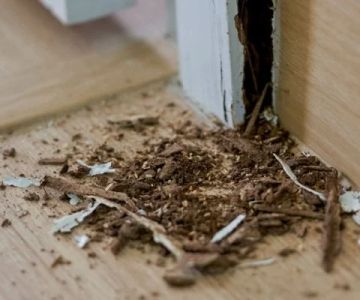



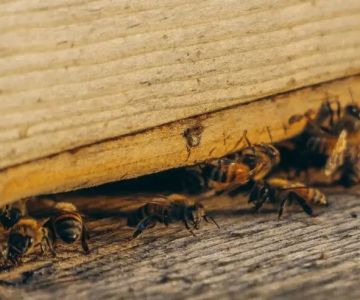
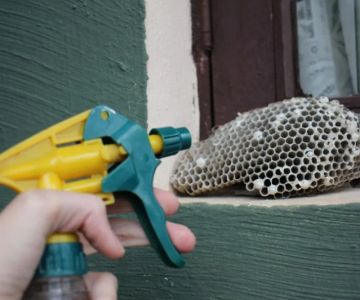
 Don Baker Pest Control, Inc4.0 (83 reviews)
Don Baker Pest Control, Inc4.0 (83 reviews)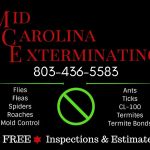 Mid Carolina Exterminating4.0 (14 reviews)
Mid Carolina Exterminating4.0 (14 reviews)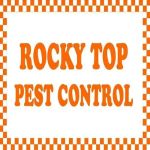 Rocky Top Pest4.0 (48 reviews)
Rocky Top Pest4.0 (48 reviews) Terminix4.0 (33 reviews)
Terminix4.0 (33 reviews) Mosquito Joe of North Georgia4.0 (198 reviews)
Mosquito Joe of North Georgia4.0 (198 reviews) UltraPro Pest Protection4.0 (224 reviews)
UltraPro Pest Protection4.0 (224 reviews)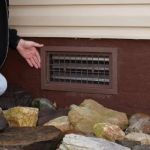 How to Control Pests in Crawl Space Vents
How to Control Pests in Crawl Space Vents How to Use Insect Growth Regulators (IGRs) Effectively – A Guide to Pest Control
How to Use Insect Growth Regulators (IGRs) Effectively – A Guide to Pest Control How to Prevent Pantry Insects (Weevils, Moths, Beetles)
How to Prevent Pantry Insects (Weevils, Moths, Beetles) What Happens During a Professional Pest Control Visit: A Complete Guide
What Happens During a Professional Pest Control Visit: A Complete Guide How to Control Pest Populations After a Natural Disaster: Effective Strategies
How to Control Pest Populations After a Natural Disaster: Effective Strategies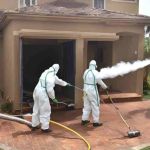 How to Safely Use Fumigation Methods for Pest Control
How to Safely Use Fumigation Methods for Pest Control